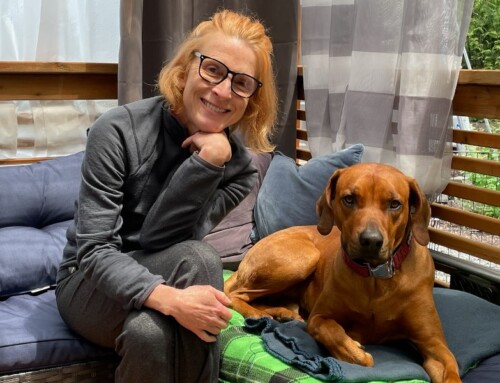At Tumbleweed Tiny House Company, we’re passionate about creating homes that are not only beautiful but also healthy and sustainable. One common misconception is that Low VOC (Volatile Organic Compounds) homes are only about the paint used on walls. In reality, a true Low VOC home goes much further, including all the materials and construction methods used throughout the entire home. Let’s explore what VOCs are, why they matter, and how Tumbleweed ensures your tiny home is a safe and healthy place to live.
What Are VOCs and Why Are They Important?
VOCs, or Volatile Organic Compounds, are chemicals that can easily become gases at room temperature. They are often found in products we use every day—like paints, adhesives, sealants, carpets, and certain types of wood. VOCs are commonly emitted from these materials, leading to indoor air pollutants that can affect human health. Traditional paints, for example, can release VOCs long after they’ve dried.
Exposure to VOCs can cause symptoms like headaches, dizziness, breathing issues, and even long-term health problems. Some VOCs can affect the central nervous system and other vital parts of the body. That’s why it’s essential to reduce VOC levels in your home and make sure you’re breathing clean, healthy air.
The Paint Myth: Low VOC Is Not Just About Paint
When people think of Low VOC, the first thing that often comes to mind is paint. While paint manufacturers have made strides in offering water-based, low VOC options, it’s just one piece of the puzzle. Many traditional paints still release harmful chemicals into the air. But VOCs are also present in materials like wood, flooring, and cabinetry. So, creating a Low VOC home means looking beyond just the paint and considering every material that goes into building your home.
At Tumbleweed, we understand this and go to great lengths to ensure that all the materials used in our tiny homes contribute to a healthy environment.
How Tumbleweed Builds Low VOC Tiny Homes
At Tumbleweed, we take a comprehensive approach to building Low VOC tiny homes, ensuring that every detail contributes to a healthier living space. Here’s how we do it:
- Low VOC Materials Throughout the Home:
We carefully choose materials that have low VOC levels for every part of your home. This includes the wood we use for subfloors, walls, and stairs. By using low VOC wood, we help keep your indoor air free from harmful pollutants. - No Glue Construction:
Many construction methods use glues that release VOCs over time. At Tumbleweed, we avoid using glue altogether. Instead, we screw or nail everything together, ensuring a strong build without toxic emissions. - Custom, Non-Toxic Kitchen Cabinets:
Most store-bought kitchen cabinets are made with adhesives and finishes that are full of VOCs. We solve this by sourcing oak kitchen cabinets that don’t use toxic glues. We leave them unfinished, giving you the option to stain or paint them with safe, water-based finishes. - Natural Wood Interior:
Inside your Tumbleweed tiny home, the walls are finished with beautiful, natural pine wood. This wood doesn’t need paint or sealant, meaning there’s no risk of harmful VOCs being released into your home. For countertops, which do require sealing, we use natural oils to create a non-toxic and durable finish. - Exterior Paint and Stains:
For the outside of your tiny home, we use either low VOC paint or low VOC stain, depending on the type of siding. This reduces air pollution, keeping the environment clean while ensuring your home looks great. - Reverse Osmosis Water Filtration System:
Air isn’t the only thing that needs to be clean in your home. We install a reverse osmosis water filtration system in the kitchen to ensure that the water you drink is free from harmful contaminants, providing extra protection for your health. - Natural and Safe Insulation Options:
For insulation, we use rock wool, which is known for its durability and energy efficiency. To ensure it’s as safe as possible, we allow the rock wool to off-gas before it’s installed in your home, reducing any residual chemical emissions. However, for those looking for an even more natural option, we offer an upgrade to organic sheep’s wool insulation. This material is all-natural, breathable, and offers excellent thermal performance, giving you a greener, toxin-free insulation alternative.
Why Does a Low Emission Home Matter?
Choosing a home built with low-emission materials is about more than reducing chemicals—it’s about creating a space where you and your family can breathe easily and live healthily. Traditional paints and other building products are major sources of indoor air pollutants that can cause serious health problems over time. Reducing these harmful emissions helps protect your health, making your home a safer, more comfortable place to live.
Building Healthy Homes
At Tumbleweed, we are deeply committed to building healthy homes that support both the environment and the well-being of our customers. Every tiny home we build is certified green at the highest level achievable, ensuring sustainable practices and eco-friendly materials throughout the process. For those with chemical sensitivities, we go a step further, offering custom low VOC homes using non-toxic materials, protective EMF wiring, and even the option to create a complete Faraday cage for added peace of mind. Our goal is to create spaces that are safe, healthy, and comfortable for everyone.








Love the focus on low VOC materials! Another thing to consider is installing a heat recovery ventilation (HRV) system, which can be especially beneficial in low VOC homes. An HRV system helps maintain fresh air circulation without losing heat, improving indoor air quality while keeping energy use efficient—perfect for eco-conscious builds!
You are correct. All our tiny homes come standard with an HRV.